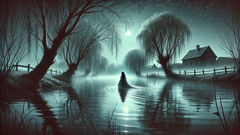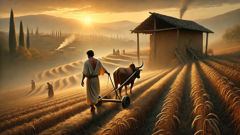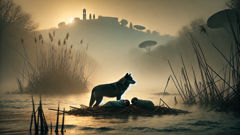Introduction
On the low bend of a wide, slow river where willows leaned like gossiping women and the reeds kept secrets, the life of a young peasant girl thinned and then slipped away as cleanly as a ribbon into water. People in the neighboring village would later say the winter had been hard, but winters in those parts were always hard; what turned winter into a verdict was a promise left unkept and a grief that would not be allowed to rot into ordinary memory. The girl—whose given name in one telling is Milena, in another Svetla, and in a third, spoken only by the elders, is left nameless—had eyes that remembered the sky and hands used to coaxing bread from dough. She loved a man who was both tender and distracted, and when the river took her because the world was careless and justice slow, the boundary between river and grief dissolved. The Rusalka was not born from malice but from an accumulation of small cruelties: a rumor, a broken betrothal, a misread glance. In the hush that followed her death, a new rumor grew, one that spread along fencelines and through winter markets, teaching children the names of eddies and teaching men to weigh their promises. This is the story of how a woman in life became a spirit of water in death, how villagers learned to listen to currents and to fear songs on the wind, and how nature keeps its own ledger when human law falters. It is a tale meant to be heard at dusk, when the willow's shadow rides the bank like a memory and the river seems to breathe.
Birth of a River Ghost
When the harvest failed two seasons in a row and the mills creaked like tired bones, the village instinct grew thin and brittle. Families closed their shutters earlier, and talk turned to bread, to debts, to the benefits of marrying well. In that cramped, oxygen-poor chatter lived the story of the girl who would become a Rusalka. She had been a daughter of modest means, raised in a whitewashed izba where the stove kept watch over small lives. Her hair was often braided with threads of corn husk; her laughter, the neighbors said, could soften a barn dog’s growl. Yet laughter does not pay for grain, and when a man from a neighboring hamlet—handsome enough and poor enough to be plausible—declared his love, the village consensus leaned toward approval. But promises in those years were like the thin ice on ditches: they sometimes bore weight and sometimes snapped under a child's boot.

She believed in his promises. She braided new threads into her hair and set aside a valise of small hopes: a shawl, a spoon, a measure of patience. When he left for a season with rumors of better work, letters followed—thin, hopeful things—and then silence. The silence was the kind that breeds rumor. Some said he had married another in a far town. Others, with less tenderness, suggested he had simply grown impatient and chosen a richer hearth. The girl's mother scolded, then silenced herself, for mothers learn early that their counsels seldom hold a son's path. She waited. The river by the hamlet, broad and slow, watched her waiting with a reptilian calm, as if to say it knew the geography of forgetting better than any person.
On the day she disappeared, the river was a mirror of the overcast sky, the willows hanging like threads of prayer. She walked to the bank carrying a small bundle: a loaf, a coin, a pressed handkerchief. People later recalled she seemed not aggressive but emptied—an absence folded like a letter. They saw her step into the water and vanish; some claimed they watched her lower herself and sink like a stone, a precise, deliberate descent. Others said the river simply claimed her when a foot slipped on a worn tree root. Children whispered that she had been lured by a song only she could hear. Those were the earliest threads of the Rusalka's history: an unremarkable accident embroidered by rumor into a haunting.
What made her becoming a Rusalka feel inevitable was not magic but the terrible fairness of memory in that place. People do not want to remember their failures; they prefer instead to forget them or assign them to fate. Yet the river keeps a different kind of ledger. It records weight and ripples and the sound of boots. After her death, fishermen spoke of nets snagging on nothing at all, of hair tangled around their oars. Children, who are often the first to perceive things adults refuse to admit, began to explain why the reeds never fall completely flat at the waterline: something breathes there, something waiting. When the first winter thaw loosened, etchings in the mud looked like delicate fingers reaching from the current, and the old women gathered these signs like knitting, each pulling a piece of the story through their lips until the name Rusalka, uttered like a warning and a prayer, filled the air. The spirit that emerged had the contours of the girl’s life—a tenderness made sharp by betrayal, a beauty that drew attention, and a sorrow that refused to be stilled. Yet the Rusalka was not only revenge. She was a reshaping of loss into presence, a lesson that sometimes grief does not end but changes location.
People adapted. Fishermen learned to leave small offerings of bread at the water's edge. Lovers walked the other side of the river. Parents kept children from wandering near willows after dusk. Those practices were not entirely superstition; they were pragmatic, a cultural hygiene that bound a community to caution. In this way the Rusalka became an architectural feature of life—an elemental hazard and a moral compass. Her birth was less a sudden apparition and more a slow accretion: a name picked up in the marketplace, a song hummed in doorways, a child's pause at the sight of a pale figure in the water. The river, which had always been a place of crossing—boats, trade, rumor—acquired a new role as a border between the living and the unresolved dead. And in the hush between sound and ice, the Rusalka learned the weather of human hearts, practiced the language of luring and unmaking, for spirits, like people, must learn the crafts of their existence.
Evenings in the izba were lived with an eye toward that slow current. Men who had been reckless in their youth found reasons to be more careful; the Rusalka's presence was a ledger of social debt. Through the long winters, stories of her will accumulate: she sings with a voice like the throat of a willow, she combs her hair with a forked branch, she calls to men who wander alone with promises of sweetness and of absolution. The important thing is not the uniformity of these tales but the way they fill the gaps left by the living: unanswered vows, shame, and small cruelties that communities prefer not to examine in daylight. In one telling, a drunkard who once wronged a girl hears his name called from the reeds and follows a light, only to find himself three days downstream with no memory of why he came. In another, a young man who had intended to marry but died before the wedding returns as a shade and is watched by a grieving maiden who cannot quite cross over. The Rusalka's story threads through such yarns, connecting them like a seam, and it becomes impossible to tell where the original girl ended and the river legend begins.
The birth of the Rusalka is therefore a lesson in cumulative consequence: a society's neglect given voice by the water. She is at once terrible and instructive, a being of repetition who keeps the village attentive to its own cruelties. And so the river, which had been a provider, a highway, and a grave, turns into a living memory that hums at the bank, reminding those who listen that every broken promise accumulates until it transforms into something that will not, and cannot, be ignored.
Songs of Lure and Memory
The Rusalka's instrument was not violence in the blunt sense but a voice tuned to the frequencies of longing. Songs in folklore are never merely melodies; they are carrying devices for memory and invitation, bridges between what was and what might have been. People who recalled meeting the spirit spoke of a song like a small tide: it rose from the reeds and pressed against the ribs until the living felt the tug of something familiar. For men who had abandoned a promise or left a name unspoken, hearing her could be like being summoned by conscience in a language the flesh itself understands. That is why many descriptions of encounters involve the sensation of recognition—an echo of an unkept vow, a detail of a childhood, a scent of bread and straw. The Rusalka could construe her lure from these fragments, weaving them into a chorus that felt as intimate as a lover's whisper.
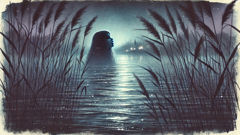
This intimacy is part of why her legend holds such a grip. The world she haunts is small and stitched by human relationships: the forge where the smith hammers sparks; the chapel where the two or three faithful pray; the field of heaped sheaves where hands have knotted fate into rope. Her voice travels best at the edge of these human places, where the wild still breathes. At twilight, when the day is slow to let go and the river assumes a softer identity, her calls are described as half-words that fall into people's laps like accidental gifts. A widower might hear her murmur the name of a deceased wife and rise in the dark to follow it, dressed in only boots and a flannel shirt. A farm boy, restless and adolescent, might hear a laugh that matches the one that used to make his sister snort and find himself walking along the bank, compelled by a nostalgia he cannot name. Folklore teaches in vignettes, and those vignettes teach caution: passion unexamined becomes the very rope that will pull you under.
But the Rusalka's songs had a double edge. They are at once mournful and mocking; they offer the comfort of remembering and the terror of being remembered for one's misdeeds. In the oldest versions, she is not purely malevolent; she is a wounded presence that takes those who come willingly as if to keep them company in her watery realm. The line between captivity and companionship blurs. Some stories emphasize retribution—men are pulled to cold death for their insolence—while others present a gentler but no less frightening outcome: those who follow the song lose a year of life, or they return with their eyes hollow and their stories thin. The moral is not always a direct one about punishment. It is a meditation on the ways we answer calls from our past and what we are willing to trade for absolution.
Communities responded with rituals that mixed pragmatic caution and ritual contrition. People tied bright threads to willows, believing that color would confuse the spirit or at least mark the boundary between safe passages and places of risk. Mothers gave children tokens to keep in their pockets—tiny crosses or braided stalks of wheat—and told them never to follow a voice into the dark. Young women who feared the possibility of becoming a Rusalka took to sleeping with a sprig of rue beneath their pillows; the sage-scented plant was thought to argue for forgetfulness rather than becoming a memorial of wronged love. Priests and old women argued in equal measure about the efficacy of Christian rites in calming something so rooted in the river; some claimed that holy water could soothe the Rusalka's rage, while others watched with suspicion, thinking that the spirit belonged to an older, more elemental religion of currents and stones. In the end, what mattered most was not doctrinal purity but attention: people learned to notice their own slights and to speak names aloud in a public way, as if communal acknowledgement could keep grief from congealing into a thing that hunted.
The Rusalka's songs also served an ecological function wrapped in myth. Rivers are dangerous; their currents conceal snares, their undercut banks collapse without warning. The Rusalka's tale instructs caution while turning fear into story. By personifying the river's peril, cultures encoded survival knowledge: do not walk alone at twilight, do not drink from unknown pools, and do not leave promises unfulfilled. The myth became adaptive, a cultural tool hidden within lyric. More subtly, it taught respect for the living memory of women and the ways communities failed them. Men who listened and changed their ways sometimes reported that the songs receded; those who persisted in cruelty found them louder, more insistent.
Over generations the melody shifted. Where once the songs were personal, weaving a single lover's infidelity into a lament, they widened into choruses about social neglect. Floods, which in rural life are both a destructor and a renewer, were rehearsed in stories: a Rusalka might arise before a flood as a harbinger, dragging the water toward villages that had forgotten to honor certain customs. The songs thus existed across scales: the intimate, the communal, and the environmental. They kept alive the memory of the girl who had died and taught the living a multi-voiced lesson—about attention, about remorse, about the cheapness of promises—by making every bank heard as an argument between nature and society. And because stories are stubborn, they survive; when the railroad finally came and the old ways thinned, the Rusalka remained, finding new bodies for her song in the gloss of city canals and the quiet drains of industrial backwaters, insisting that where people fail, water will remember.
When Memory Refuses to Sleep
The Rusalka's persistence is anchored in a truth older than any particular village: communities can bury mistakes but nature does not forget. Stories accumulate until they become a social conscience. As the decades move and people die, names change, and the pressures of modernization rearrange priorities, the Rusalka remains a barometer of collective memory. In years when the crops swell and marriages proceed without drama, villagers might say she sleeps. In leaner years her presence amplifies, taking on particulars that reflect the community's anxieties. The adaptability of the myth is part of what keeps it alive; it bends to the needs of those who tell it. When war passed like a hush across the land, people whispered that the Rusalka had multiplied, that restless girls and boys swept into battle had become similar kinds of spirits in foreign rivers. When industry darkened the water, new Rusalki were rumored to take the form of oily film gathering in ditches, their cries a different timbre but the same accusation.
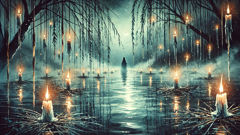
Marginal lives have often been the center of such stories. Women who die with unresolved desires or social shame, children lost to simple accidents, people whose names were never spoken again—each becomes an offering to the river. The Rusalka then occupies a liminal role: she is both a protest and a remembrance. To approach the bank with a clean mind, with a sense of apology and ritual, is to prevent resentment from becoming agency. That is why so many rituals centered on small acts of remembrance: laying bread on the water on the anniversary of a death, setting a candle in a skiff to drift and mark passage, or even gathering to sharpen scythes and speak openly about what the community owed its dead. In these acts the Rusalka is not merely feared but engaged; she sets a standard and invites redress.
There are always exceptional stories that complicate the straightforward moral. A widow in a neighboring district once began leaving two spoons on the sill, claiming she had promised them to her lost daughter. Men who were accused of neglect would sometimes claim to have seen the Rusalka and vow never to sin so again; whether they meant it is another matter. Some said they had seen towers of hair on the banks, a testament to her vanity or her beauty; others swore the river spit up small, smooth stones carved with initials—proof of rearranged memories. The multiplicity of these accounts shows how myth can be both elastic and reliquary: it stores fragments of a community's conscience in forms that are consumable as tale and functional as warning.
The scholars who came later—pale, notebooked men and women from the city—attempted to classify the Rusalka. Some argued she was an echo of pre-Christian water deities, the survivals of river goddesses ritualized into female revenants because the culture no longer allowed open worship. Others saw her as a psychosocial mechanism for controlling behaviors that endangered villagers, especially young men. Anthropologists noted the environmentally adaptive role of such myths: where rivers are treacherous, stories are more elaborate. Yet all these classifications leave out the thing that matters most to the people telling the stories: the sense of encounter. Stories are not only instruments for prediction or control; they are moments when a community recognizes a failing and chooses how to live with it. The Rusalka pulls up questions instead of giving answers: How do we properly grieve a life that was underappreciated? Who pays for a promise broken? How does a river carry absolution?
In modern retellings the Rusalka sometimes returns with sympathy. Contemporary poets and playwrights render her as a tragic figure, emphasizing the social forces that forced her death. These versions ask readers to feel rather than simply fear. A modern stage play might depict villages as anxious communities bound by poverty and constrained opportunity, and the Rusalka's actions as consequences of neglect rather than simple malevolence. In this sympathetic register, the river becomes a mirror where society must confront its reflection: if a girl could become a horror after death, perhaps the community has been the slow, patient architect of that horror in life.
Even when sympathy grows, the essential instruction remains unchanged: the water does not want to be ignored. Whether the Rusalka is invoked as a cautionary tale for lads with wandering eyes or as a lament for lives not permitted to fulfill themselves, she keeps attention trained on what a community refuses to see. People who live near her river continue to leave small offerings and tie threads to willows. They continue to teach children the songs that would confuse her lure. In the hush of twilight, when the surface of the river becomes a black mirror, the Rusalka might appear or she might not. The truth of myth lies not in proof but in practice—what people do to stay safe, to keep their promises, to remember the dead. That is why the Rusalka persists, not simply as a ghost but as a social instrument: she makes memory act like a bite and a balm at the same time. Her waters continue to teach those who listen that the most dangerous thing is forgetting, and the bravest act is to name what was lost so it will not transform into something that asks for retribution.
Conclusion
The Rusalka is less a simple monster than a living ledger of unmet obligations, a presence that gathers what communities leave loose. Across centuries and social change she remains an emblem for how a society treats its vulnerable members, and her haunting is a form of moral weather: sometimes windy and biting, sometimes a hush that coaxes confession. In the end, the tale asks not whether spirits exist but whether the living will take responsibility for the small cruelties that grow like moss into something that will not be easily dislodged. To tell her story at dusk, to tie a ribbon to a willow, to lay bread on the edge of water—these acts are less about superstition than about cultivating attention. A community that learns to listen to its rivers, to name what it has lost, and to return what was taken will find that the songs change. They become not calls to the deep but lullabies that soothe a river and, perhaps, a people's conscience. The Rusalka endures in that tension between accusation and remembrance: she will always be at the water's edge as long as we remain capable of forgetting one another.

